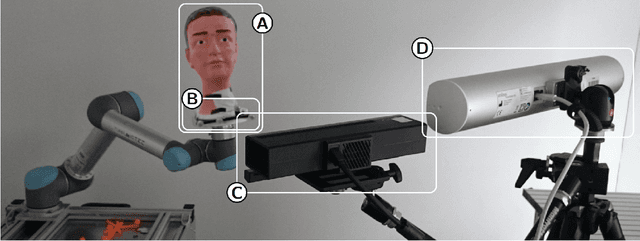Towards Head Motion Compensation Using Multi-Scale Convolutional Neural Networks
Paper and Code
Jul 10, 2018



Head pose estimation and tracking is useful in variety of medical applications. With the advent of RGBD cameras like Kinect, it has become feasible to do markerless tracking by estimating the head pose directly from the point clouds. One specific medical application is robot assisted transcranial magnetic stimulation (TMS) where any patient motion is compensated with the help of a robot. For increased patient comfort, it is important to track the head without markers. In this regard, we address the head pose estimation problem using two different approaches. In the first approach, we build upon the more traditional approach of model based head tracking, where a head model is morphed according to the particular head to be tracked and the morphed model is used to track the head in the point cloud streams. In the second approach, we propose a new multi-scale convolutional neural network architecture for more accurate pose regression. Additionally, we outline a systematic data set acquisition strategy using a head phantom mounted on the robot and ground-truth labels generated using a highly accurate tracking system.
 Add to Chrome
Add to Chrome Add to Firefox
Add to Firefox Add to Edge
Add to Edge